World War II has intrigued historians and the general public, provoking questions about its starting point.
The war began on September 1, 1939, with the German invasion of Poland.
This decisive event led significant powers like Britain and France to declare war on Germany, marking the onset of a conflict that would engulf many nations over the years.
The invasion of Poland by Adolf Hitler’s forces not only marked the beginning of the war but also highlighted the aggressive expansionist policies that would characterize Germany’s role throughout the conflict.
This initial act of aggression set off a chain of events that would ultimately involve numerous countries and alter global alliances.
Individuals interested in the events leading up to this significant date will find the unfolding of circumstances both complex and enlightening.
Examining the first days of World War II offers valuable insights into the geopolitical tensions and alliances of the time.
Understanding these events provides a clearer picture of how the conflict escalated and what lessons can be learned from history.
As the story unfolds, the complexity of international relationships and military strategies becomes evident, making it a fascinating period to explore.
The Timeline of World War II
World War II was a global conflict that lasted from 1939 to 1945. It involved major powers divided into the Axis and Allies, and pivotal events shaped history.
When Did World War II Begin?
The onset of World War II was marked by the invasion of Poland by Nazi Germany on September 1, 1939. This aggression prompted Britain and France to declare war on Germany shortly after, on September 3, 1939.
The invasion responded to tensions from the Treaty of Versailles, which ended World War I.
The war’s beginning in Europe set the stage for global conflict involving numerous countries across continents.
Events that followed, like the attack on Pearl Harbor by Japan on December 7, 1941, brought the United States into the conflict.
Key Dates in World War II History
- 1939: Germany invades Poland, starting the war.
- 1940: Germany occupies France. The Battle of Britain begins.
- 1941: Japan attacks Pearl Harbor; the U.S. enters the war. The Soviet Union faces a German invasion.
Important battles like Stalingrad (1942-1943) and D-Day (1944) were turning points.
The war ended on September 2, 1945, with Japan’s surrender. Over 30 countries were involved, and estimates suggest around 60 million people died. The conflict’s conclusion reshaped borders and global politics.
How World War II Started: The Prelude to Conflict
Tensions before World War II were rooted in the aftermath of World War I and the Treaty of Versailles, which imposed strict conditions on Germany.
Economic instability, nationalism, and territorial ambitions fueled the drive to conflict.
Hitler’s rise to power played a key role, as did the militarization of Germany, Italy, and Japan.
The failure of appeasement policies by European powers, believing some demands could be met to avoid conflict, emboldened aggressive expansions.
This set the stage for the large-scale war that unfolded.
The Causes of World War II
World War II arose from a combination of unresolved issues from World War I, rising political tensions, and pivotal events that ultimately triggered the conflict.
These elements interacted in complex ways to set the stage for a global war.
Understanding the Aftermath of World War I
World War I left Europe in a state of turmoil. The Treaty of Versailles placed the blame and heavy reparations on Germany, resulting in economic hardship.
This led to widespread resentment and laid the groundwork for future conflict. The treaty did not foster lasting peace but created an environment where radical ideologies could flourish.
The economic depression that followed also contributed to instability.
Countries faced financial crises and unemployment, which made the populace more receptive to extremist political movements.
This climate helped Adolf Hitler rise to power with promises of restoring Germany’s strength.
Political Alliances and Tensions Leading to WWII
The period between the two world wars saw various political alliances form, which increased tensions.
The Axis Powers, including Germany, Italy, and Japan, were aggressive in their expansionist policies.
Conversely, the Allies, including France and Great Britain, initially hesitated to confront these aggressive moves.
Appeasement policies, such as allowing Germany to annex parts of neighboring countries, were attempts to avoid another major conflict.
However, these strategies only emboldened the Axis Powers.
Political fragility in Europe and these strategic errors paved the way for war.
Key Events That Triggered World War II
Key events ignited full-scale conflict and answered questions like “When did WWII start?”
The German invasion of Poland on September 1, 1939, is often identified as the starting point of World War II. This act prompted Great Britain and France to declare war on Germany days later.
Other critical moments included the signing of the Molotov-Ribbentrop Pact, a non-aggression treaty between Germany and the Soviet Union. This allowed Germany to invade Poland unopposed from the east, creating a broader conflict.
Major Participants in World War II
World War II involved many countries, broadly divided into two main groups: the Allies and the Axis Powers. Several prominent leaders participated in the war, whose decisions shaped its course.
Who Were the Allies and Axis Powers?
The Allies included major powers like the United States, the United Kingdom, the Soviet Union, China, and France. Their goal was to stop the aggressive expansion of the Axis Powers.
On the other hand, the Axis Powers consisted of Germany, Italy, and Japan, who sought to expand their territories.
Under Adolf Hitler, Germany was the central force behind many military strategies.
The Allies worked together to counter the threat and eventually succeed in World War II.
Countries Involved in World War II
More than 30 countries participated in World War 2, either directly or indirectly.
In addition to the primary players, nations like Canada, Australia, and India supported the Allies with troops and resources. Italy initially aligned with Germany but later switched sides in 1943.
The broad involvement of these countries made the conflict a global war, impacting nearly every continent. Many European nations faced occupation by Axis forces, intensifying the need for international cooperation among the Allies.
This large-scale participation made it one of the most widespread conflicts in history.
The Role of Major Leaders During the War
Prominent leaders played crucial roles during the conflict.
As the British Prime Minister, Winston Churchill inspired resilience with his speeches.
Franklin D. Roosevelt led the United States, navigating the country through World War II and the Great Depression.
Joseph Stalin led the Soviet Union, making significant contributions on the Eastern Front.
Adolf Hitler, the German leader, pursued aggressive military strategies that ultimately led to Germany’s defeat.
Each leader’s policies and decisions demonstrated the critical impact of leadership on the war’s outcome.
Significant Battles and Strategies
World War II was marked by numerous battles that shaped its course. Critical strategies and technological innovations played a significant role in the outcome. Understanding these elements provides insight into the war’s progression and impact on history.
Key Battles of World War II
The Battle of Stalingrad was a turning point, halting German advancement in Eastern Europe. Lasting from August 1942 to February 1943, this battle resulted in significant German losses and weakened their eastern front.
Another pivotal conflict, the Battle of Midway, occurred in June 1942.
The United States, using intelligence breakthroughs, dealt a severe blow to the Japanese fleet, shifting the balance in the Pacific.
D-Day, on June 6, 1944, marked the Allied invasion of Normandy. This massive operation was crucial for liberating Western Europe from Nazi occupation.
Innovations in Warfare: Technology in WWII
World War II introduced remarkable technological advances.
Radar technology played a vital role in improving the detection of enemy aircraft and ships, thus enhancing military strategy.
These advancements in radar significantly contributed to Allied successes.
The development of the atomic bomb by the United States, culminating in its use in Hiroshima and Nagasaki, was a decisive factor in ending the war.
This powerful new weapon dramatically altered warfare and international relations post-war.
The use of aircraft was also revolutionary.
Strategic bombing campaigns, such as those by the Allied forces, targeted industrial and civilian centers, aiming to cripple enemy production and morale.
World War II from the Frontlines: Soldier Experiences
Soldiers in World War II endured extreme hardships on the frontlines.
Trench warfare exposed them to harsh conditions and relentless combat, particularly in the Eastern and Western Fronts.
In the Pacific Theater, jungle warfare presented unique challenges, including unfamiliar terrain and tropical diseases.
Soldiers relied on camaraderie and resilience to face these adversities.
Personal stories from veterans highlight the psychological toll of the war, shaping a generation of military history and contributing to the establishment of war memorials worldwide.
These memorials remind us of the sacrifices made, ensuring that the lessons of WWII endure.
The End of World War II
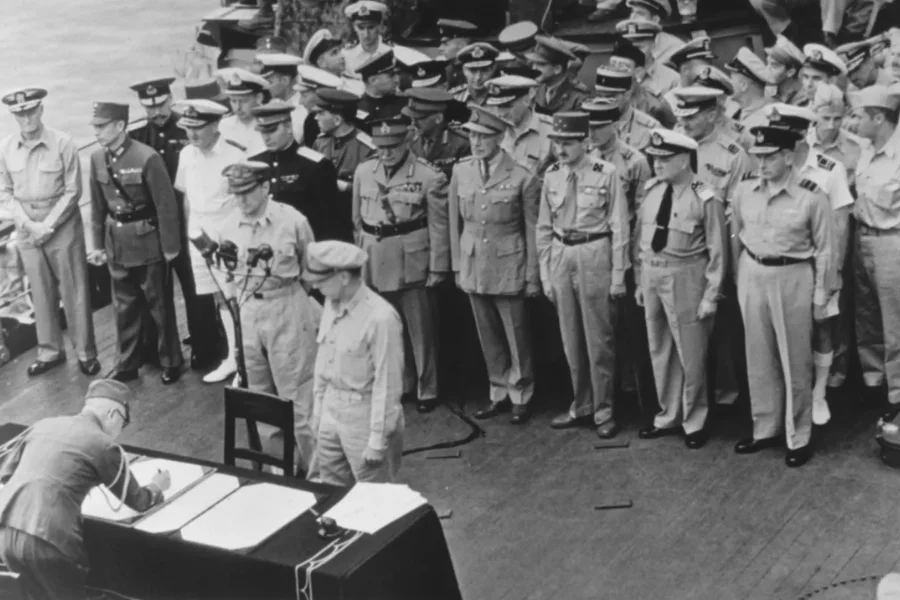
Japanese delegation formally signs the instrument of surrender on board the USS Missouri, marking the official ending of World War II (Sep 2, 1945)
World War II drew close as the Allies solidified their victory over the Axis powers. This pivotal moment reshaped geopolitical dynamics and had lasting global effects.
When Did World War II End?
World War II formally ended on September 2, 1945, when Japan signed the unconditional surrender aboard the USS Missouri.
This surrender came after the United States dropped atomic bombs on Hiroshima and Nagasaki in early August, leading to devastating losses and forcing Japan to capitulate.
The official cessation of hostilities marked the end of a global conflict that began in 1939. It impacted countless lives and reshaped international relations for decades to come.
Who Won World War II and Who Lost?
The Allies emerged victorious in World War II, while the Axis powers faced defeat.
The main Allied countries included the United States, the Soviet Union, the United Kingdom, and China.
In contrast, the major Axis powers, namely Germany, Italy, and Japan, faced significant losses.
Germany’s surrender on May 8, 1945, marked the end of the war in Europe, followed by Japan’s surrender in September.
The victory ended the war and paved the way for significant political changes, including the division of Germany and Japan’s demilitarization.
The Impact of World War II on Global Politics
World War II significantly altered global political landscapes. The creation of the United Nations in 1945 aimed to promote international cooperation and prevent future conflicts.
Two major powers, the United States and the Soviet Union, emerged, leading to the bipolar world order of the Cold War. This era of political tension and ideological rivalry would define international relations for decades.
Additionally, many colonies sought independence, inspired by war-time promises of self-determination, reshaping the colonial map. The aftermath of the war also highlighted the need for human rights awareness, leading to the Universal Declaration of Human Rights in 1948.
The Legacy of World War II
World War II profoundly impacted the world by reshaping political boundaries and influencing economic and social structures. The remnants of the war are still visible in modern diplomatic relationships, legal frameworks, and global organizations.
How World War II Shaped the Modern World
World War II led to significant geopolitical changes. The United Nations was established to prevent future conflicts. Many countries gained independence post-war, permanently changing colonial landscapes.
Furthermore, WWII fostered technological advancements, such as radar and nuclear energy development, which are still pivotal today. The Cold War also emerged, dividing the world into Eastern and Western blocs. You can learn more about how the legacy shaped the modern world.
Lessons Learned from World War II
The devastation of World War II taught the world valuable lessons, emphasizing the need for diplomacy over conflict. Countries have realized the importance of international cooperation in maintaining peace.
The Nuremberg Trials established a precedent for prosecuting war crimes, setting the foundation for international law and the International Criminal Court. Additionally, the creation of treaties like NATO was aimed at collective defense and stability.
Commemorating World War II: Memorials and Museums
Memorials and museums worldwide honor those who served during World War II. The National WWII Museum in New Orleans offers insights into the war’s impact, while the World War II Memorial in Washington, D.C., is a tribute to American soldiers.
These sites preserve the history and stories of those who lived through the era, ensuring that future generations understand the significance and the sacrifices made during the war.
Closing Remarks
World War II marked a significant chapter in global history, altering political landscapes and societies. The conflict began on September 1, 1939, when Nazi Germany, led by Adolf Hitler, invaded Poland. This aggression set off a chain reaction among the world’s nations.
The war was characterized by major events and battles that spanned continents. On May 8, 1945, Germany surrendered, officially ending the war in Europe. The Pacific conflict concluded later that year when Japan surrendered on September 2, 1945, ending the war globally.
Throughout the war, countries formed alliances. The Allies, including the United States, the Soviet Union, and the United Kingdom, fought against the Axis powers.
Strategies and military technology played a critical role in shaping the direction and outcome of the conflict.
World War II led to significant advancements in technology and industry. It included using aircraft, tanks, and naval power, which became standard in military tactics. The war also had profound social impacts, leading to changes in gender roles as women took on more active roles in the workforce.
Key Takeaways:
- World War II began with Germany’s invasion of Poland in 1939 and concluded in 1945.
- The conflict profoundly affected international relations and societies, setting the stage for future geopolitical developments.
These topics serve as a foundation for further exploration into post-war changes and global recovery efforts.
Frequently Asked Questions
World War II was a complex global conflict involving numerous countries and events. These frequently asked questions explore key topics related to the war, including causes, major events, and its aftermath.
Why did Germany start WWII?
Under Adolf Hitler, Germany sought to expand its territory and restore national power. Hitler’s ambitions and the desire to overturn the restrictions of the Treaty of Versailles played significant roles in triggering World War II.
Why did Pearl Harbor happen?
The attack on Pearl Harbor occurred because Japan aimed to cripple the United States Pacific Fleet. This would prevent American interference with Japan’s expansion plans in Southeast Asia. As a result, the United States entered the war shortly afterward.
What was Hitler’s goal in WWII?
Hitler aimed to establish a dominant Aryan race and gain Lebensraum (living space) for Germans. This involved conquering Eastern Europe and exterminating or subjugating other races deemed inferior.
What ended WWII?
World War II concluded with the unconditional surrender of the Axis powers. Germany surrendered in May 1945, followed by Japan in September, after the United States dropped atomic bombs on Hiroshima and Nagasaki.
Could WWII have been prevented?
While some historians argue that more decisive actions by other countries against early German aggression could have deterred war, the combination of political, economic, and social factors at the time made it challenging to prevent the conflict entirely.
When did China enter WWII?
China began fighting in WWII when Japan invaded in 1937. China was a significant part of the Allied powers and fought against Japanese forces throughout the war.
Why was Germany allowed to be a country after WWII?
After WWII, Germany was divided and demilitarized, but it remained a nation. Allied powers aimed to rebuild and democratize Germany, establishing separate East and West German states during the Cold War.
What was Hitler’s nationality?
Adolf Hitler was born in Austria in 1889. Despite his Austrian birth, he later became the leader of Nazi Germany.
How did Hitler’s foreign policy lead to WWII?
Hitler’s aggressive foreign policy, including the annexation of Austria and the invasion of Poland, violated international agreements. These actions prompted Britain and France to declare war on Germany.
How many Germans died in WWII?
Approximately 5.3 million German soldiers died in WWII. Millions more civilians died from air raids, the Holocaust, and other wartime conditions.
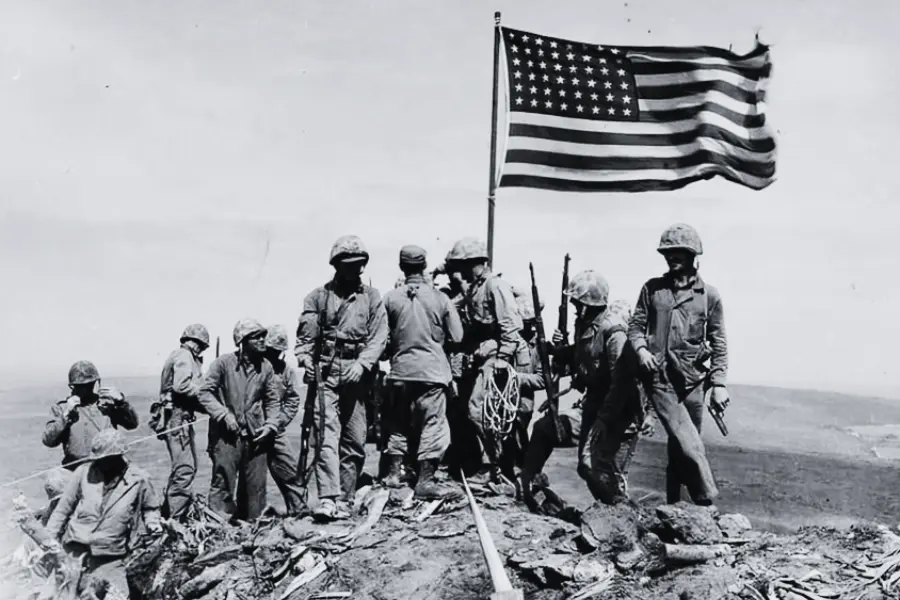
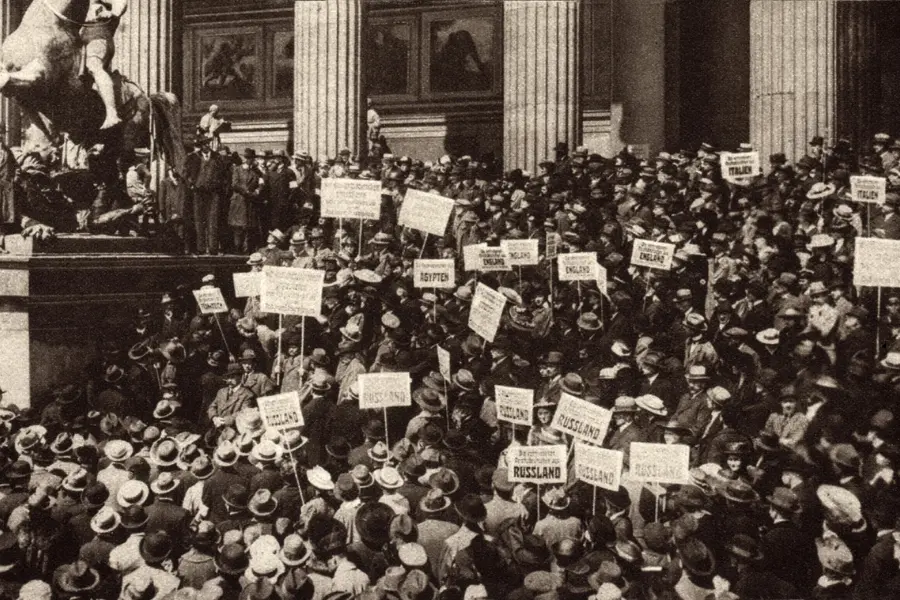
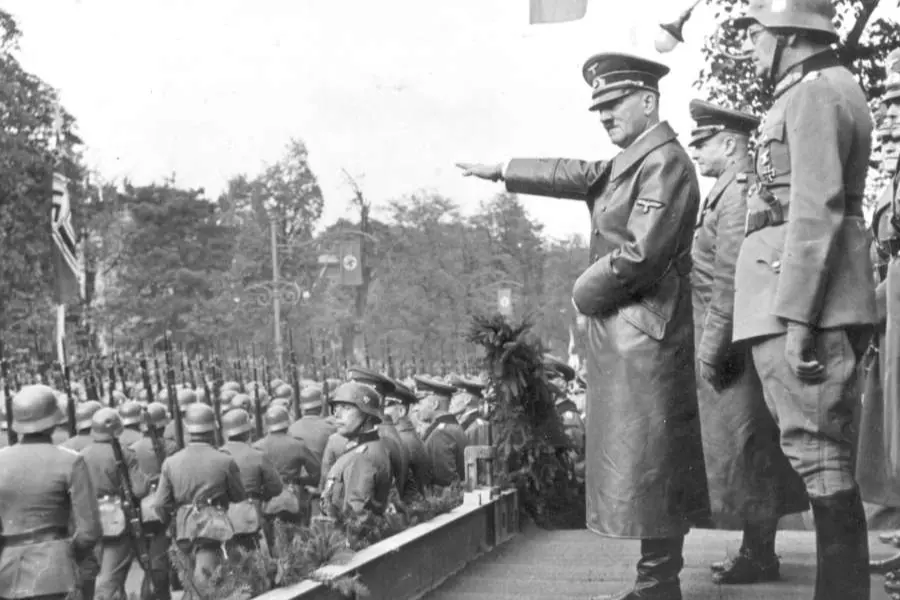
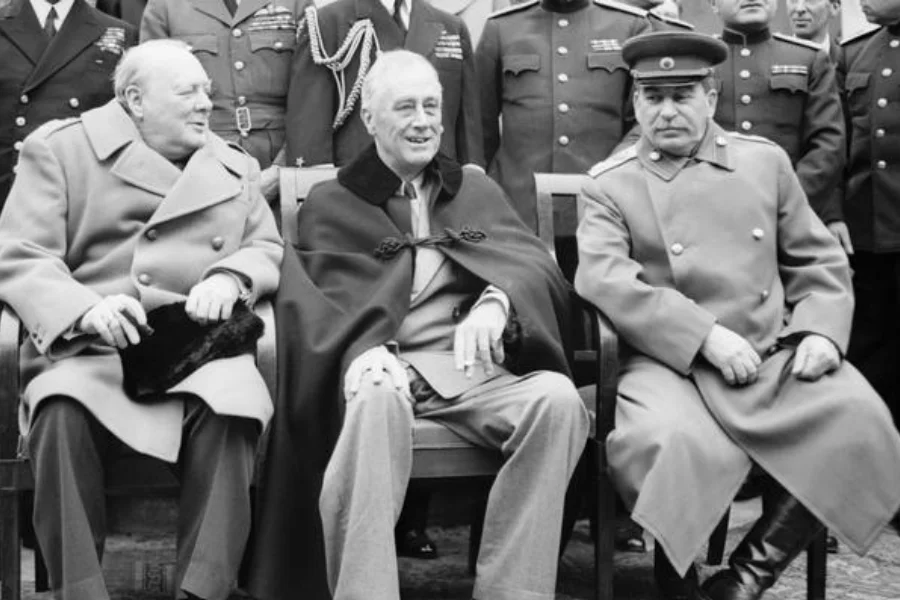
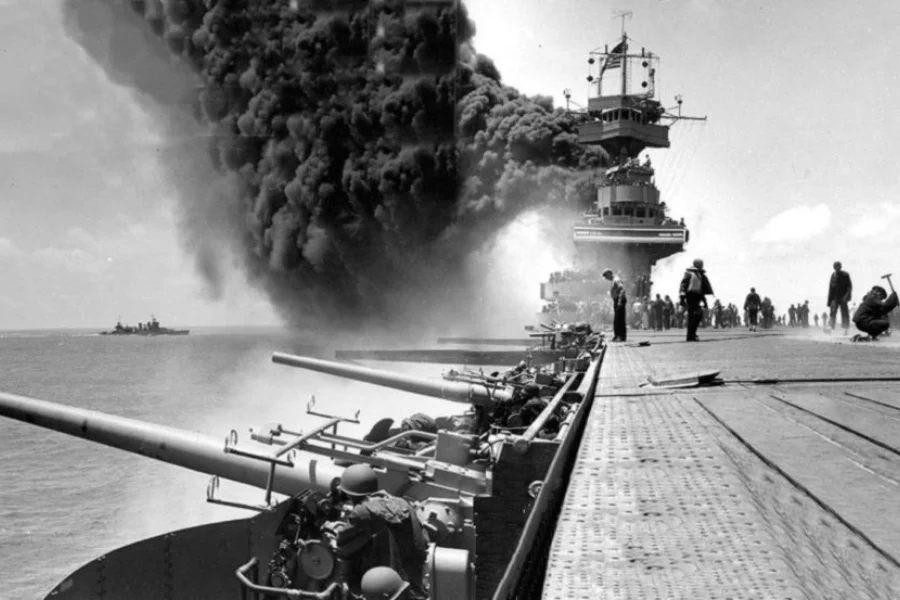
 Leonardo Bianchi,
the creator of Leonardo da Vinci's Inventions.
Thank you for visiting
Leonardo Bianchi,
the creator of Leonardo da Vinci's Inventions.
Thank you for visiting